Five PhD students of the Comparative Spermatology Group in Cape Town all use the SCA CASA system with great effect!
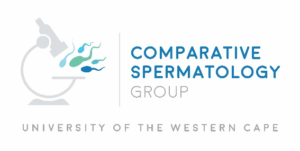 Cape Town must have among the most active SCA CASA users in the world in a radius of 25 km. Approximately 30 scientists, students and embryologists from the University of the Western Cape, Stellenbosch University (Medical Physiology and Animal Science), Cape Fertility Clinic and Medical Research Council’s Primate Unit are SCA users. Moreover, they collaborate on many projects and work on a wide range of species from insects and other invertebrates, many vertebrates and particularly domestic and wildlife species to humans and have joint quarterly seminars. Many of these students are studying towards MSc degrees and currently three are pursuing PhDs from the Division of Medical Physiology, Department of Biomedical Sciences, Stellenbosch University.
Cape Town must have among the most active SCA CASA users in the world in a radius of 25 km. Approximately 30 scientists, students and embryologists from the University of the Western Cape, Stellenbosch University (Medical Physiology and Animal Science), Cape Fertility Clinic and Medical Research Council’s Primate Unit are SCA users. Moreover, they collaborate on many projects and work on a wide range of species from insects and other invertebrates, many vertebrates and particularly domestic and wildlife species to humans and have joint quarterly seminars. Many of these students are studying towards MSc degrees and currently three are pursuing PhDs from the Division of Medical Physiology, Department of Biomedical Sciences, Stellenbosch University.
To cover the details of all these highly successful groups/students is a formidable task and in this blog we will briefly concentrate on five PhDs (alphabetical order) from the Comparative Spermatology Group, University of the Western Cape:
Monique Bennett:
I am a staff member in the Department of Medical Biosciences (MBS), lecturing in a number of human biology courses and almost completed my PhD at the University of the Western Cape. My earliest introduction to CASA was in my Honours year while working with vervet monkey sperm using the Sperm Motility Quantifier (SMQ), developed by my supervisor Prof Gerhard van der Horst. This system is no longer in use but, at the time, filled a niche in the developing CASA market.
My PhD study focuses on five marine broadcast spawning invertebrates, namely sea urchins, black and white mussels, oysters and abalone. This baseline study focuses on quantitative sperm motility and morphology analyses of sperm in different media. In addition, we want to find out: does chamber depth matter and does the functionality of spermatozoa differ from the testis compared to naturally spawned? All the mentioned species show helical swimming tracks which seems to have an advantage in meeting an oocyte compared to straight-line swimming. These CASA analyses provide data relating to sperm quality, which is important for the aquaculture industry and for sperm competition studies. My favourite module, the SCA morphology, allows the capturing of basic phase contrast microscopy images and using the tools section to quantify various morphometric characteristics of spermatozoa.
Email: mbennett@uwc.ac.za
Shannen Keyser:
I live in Cape Town, South Africa, and work as part-time lecturer at the University of the Western Cape. I am doing my PhD in Spermatology in the Comparative Spermatology Laboratory under the supervision of Dr Liana Maree and my co-supervisor Prof Gerhard van der Horst.
I am investigating the functional and structural differences between two sperm sub-populations found within heterogeneous human semen and focus on several sperm parameters such as motility, kinematics, acrosome reaction, maturity and intactness of chromatin, reactive oxygen species, mitochondrial membrane potential, vitality and hyperactivation. Our results have shown that a “good” population and “bad” population exist in the same semen sample and can be used as a model to define sperm quality with a potential to have fertilization capacity. I presented part of my findings at the Polish Andrology Meeting in Krakow (2017) and the 13th International Symposium on Spermatology (2018).
The second part of my PhD involves the effect of substances naturally found within the female reproductive tract, namely progesterone, myo-inositol, dopamine and prolactin, on sperm function and if they can be used to improve poor sperm quality.
The use of SCA has improved the quality of lab testing and sample analysis by eliminating the subjective analysis of human sperm and giving way to consistent quality control and analysis.
Email: 3263105@myuwc.ac.za
Patrick Siyambulela Mafunda (PhD):
I obtained my PhD in December 2018 in the Comparative Spermatology Lab, UWC. While I grew up in small town called Matatiele in a rural area of the Eastern Cape, I lived the Western Cape for a few years, where I obtained all my tertiary qualifications. Currently, I am living in the Eastern Cape doing a post-doctoral fellowship at Fort Hare University.
I did a novel study during my PhD on the endangered African penguin. Currently, only 2% of the number of African penguins reported in the middle of the 1900’s still occurs around our shoreline. The first objective of my study was to describe the histology and ultrastructural features of the testes and ovaries. Secondly, using blood and faecal samples, hormonal profiles for the main reproductive steroids were established. Finally, for the first time in African penguin, using the SCA, I evaluated the quality of semen and physiology of the spermatozoa, including an experimental study on sperm cryopreservation. The results of this study contribute to the long-term management and conservation of the African penguin species.
We have published a paper on the sperm structure and motility of African penguin in Theriogenology and just completed a second paper on seasonality in reproduction. I presented our main findings at the 9th International Penguin Congress in Cape Town (2016). It was a great honour to have worked on a project that could change the world.
Email: siya.85mafunda@gmail.com
Facebook: Siyambulela Mafunda
Marize Sounes:
I completed my MSc in Animal Science from Stellenbosch University in 2011 and continued research in nutrition while employed by the Department of Agriculture, Land Reform and Rural Development. I am stationed in Jan Kempdorp, Northern Cape, in the field of nutritional research. In 2016 I got the opportunity to liaise with Dr Liana Maree and Prof Gerhard van der Horst in procuring an SCA system for the above Department. I envision that the SCA software will allow us to contribute quick results to both the scientific and farming communities in the Northern Cape.
My PhD focuses on sperm functionality of the Swakara sheep breed (picture above). The study aims to define the basic semen characteristics of the Swakara, how it differs between seasons and how it is linked with lambing percentages. The information will be compared to flocks from commercial farmers and communal farmers. It will also be compared to other sheep species within the same environment (Namakwa Afrikaner, Dorper, Meatmaster, Afrino). It is speculated that sperm quality and functionality in the Swakara breed might be different from other species because the selection of breeding rams is mainly based on the phenotypical characteristics of the pelt. Virtually no reproductive performance is taken into consideration when ram selection takes place. It is further speculated that certain lines (brown, silver, white and black pelts) will have different sperm quality and functionality. This research will almost be pointless without the SCA CASA quantification.
This research could make a profound contribution to the Swakara industry, especially since it is one of the very few breeds that can adapt to the harsh environments found in the Boesmanland, Mier and Richtersveld areas.
Email: marize.leroux@gmail.com
Tarryn Webber:
I hail from Mitchell’s plain, a suburb in Cape Town. I am currently a PhD candidate in the Comparative Spermatology Lab, Department of Medical Biosciences (UWC) and an Associate Anatomy Lecturer for the Sports, Recreation and Exercise Science Department at UWC.
I completed my MSc in Reproductive Biology and am now embarking into the field of Comparative Spermatology for my PhD under the supervision of Dr Maree and Prof van der Horst. My project will explore human sperm flagellar analysis in conjunction with the SCA system (CASA). The project will focus on standardizing of protocols and an application component, using semen from both donors and sub-fertile patients. I have just started this investigation at the beginning of April. I am currently training on the SCA system for sperm motility, and I find the program makes the semen analysis process uncomplicated and saves a great amount of time. Definitely excited to start using the SCA system for my upcoming project and complete my full PhD proposal and required protocols.
Email: tarrynjwebber@gmail.com
LinkedIn: https://www.linkedin.com/in/tarryn-webber-tj060692
Compiled by joint supervisors of most of the above students:
Dr Liana Maree (PhD)
Heading the Comparative Spermatology Laboratory, UWC
Prof Gerhard van der Horst (PhD, PhD)
Senior Consultant to Microptic S.L.




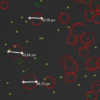
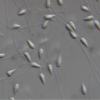

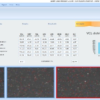
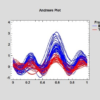

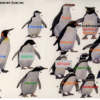
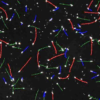

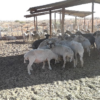

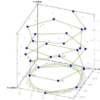


Leave A Comment